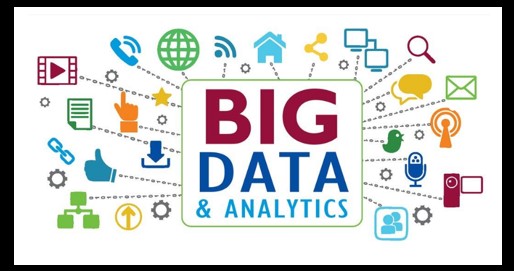As the amount of data generated by businesses continues to grow, analyzing that data becomes increasingly important. Big data analytics can help organizations make better decisions and improve their operations. In this article, we will provide an introduction to some of the most popular tools used for big data analytics.
What is Big Data Analytics?
Big data analytics is the process of examining large and complex data sets to uncover hidden patterns, unknown correlations, and other useful information. This is done using advanced analytical techniques such as machine learning, data mining, and predictive modeling.
The Importance of Big Data Analytics
Big data analytics can provide businesses with valuable insights that can help them make better decisions. For example, it can be used to:
- Identify new opportunities and revenue streams
- Improve operational efficiency and reduce costs
- Enhance customer experiences and satisfaction
- Mitigate risks and improve security
Popular Tools for Big Data Analytics
Hadoop
Hadoop is an open-source software framework for storing and processing large data sets. It uses a distributed file system and a programming model called MapReduce to process and analyze data. Hadoop is widely used for big data processing and has become an industry standard.
Spark
Spark is another open-source big data processing framework. It is designed to be faster and more flexible than Hadoop, and it can process data in-memory. Spark can be used for a wide range of big data processing tasks, including machine learning, graph processing, and streaming data analysis.
Cassandra
Cassandra is a distributed database management system that can handle large amounts of data across many commodity servers. It is designed to be highly scalable and fault-tolerant, making it a good choice for big data applications. Cassandra is often used for real-time data processing and analytics.
Tableau
Tableau is a data visualization tool that allows users to create interactive dashboards and reports. It can connect to a wide range of data sources, including Hadoop and Spark, and it can handle large amounts of data. Tableau is widely used for business intelligence and data analytics.
R
R is a programming language and environment for statistical computing and graphics. It has become popular for big data analytics due to its powerful data manipulation and analysis capabilities. R can be used for a wide range of big data tasks, including data cleaning, visualization, and machine learning.
Python
Python is a versatile programming language that is widely used for big data analytics. It has a wide range of libraries and tools for data analysis and visualization, including NumPy, Pandas, and Matplotlib. Python can be used for a wide range of big data tasks, including data cleaning, visualization, and machine learning.
Conclusion
Big data analytics is an important tool for businesses that want to make data-driven decisions. By using the right tools and techniques, businesses can gain valuable insights from their data and use that information to improve their operations and customer experiences.
FAQs
- What is big data analytics? Big data analytics is the process of examining large and complex data sets to uncover hidden patterns, unknown correlations, and other useful information.
- Why is big data analytics important? Big data analytics can provide businesses with valuable insights that can help them make better decisions, identify new opportunities and revenue streams, improve operational efficiency and reduce costs, enhance customer experiences and satisfaction, and mitigate risks and improve security.
- What are some popular tools for big data analytics? Some popular tools for big data analytics include Hadoop, Spark, Cassandra, Tableau, R, and Python.
- What is Hadoop? Hadoop is an open-source software framework for storing and processing large data sets. It uses a distributed file system and a programming model called MapReduce to process and analyze data.
- What is Spark? Spark is another open-source big data processing framework. It is designed to be faster and more flexible than Hadoop, and it can process data in-memory. Spark can be used for a wide range of big data processing tasks, including machine learning, graph processing, and streaming data analysis.
- What is Tableau? Tableau is a data visualization tool that allows users to create interactive dashboards and reports. It can connect to a wide range of data sources, including Hadoop and Spark, and it can handle large amounts of data. Tableau is widely used for business intelligence and data analytics.
- What is R? R is a programming language and environment for statistical computing and graphics. It has become popular for big data analytics due to its powerful data manipulation and analysis capabilities. R can be used for a wide range of big data tasks, including data cleaning, visualization, and machine learning.
- What is Python? Python is a versatile programming language that is widely used for big data analytics. It has a wide range of libraries and tools for data analysis and visualization, including NumPy, Pandas, and Matplotlib. Python can be used for a wide range of big data tasks, including data cleaning, visualization, and machine learning.
- Can big data analytics be used by small businesses? Yes, big data analytics can be used by businesses of all sizes. There are many tools and services available that are affordable and easy to use, making big data analytics accessible to small businesses.
- What are some challenges of big data analytics? Some challenges of big data analytics include managing and processing large amounts of data, ensuring data quality and accuracy, integrating data from multiple sources, and finding the right tools and techniques for the job.
